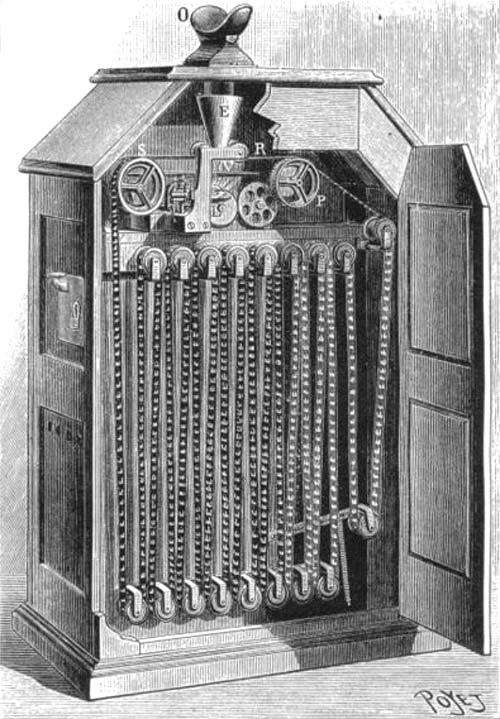The very first films in the early
1890's (what the very first film is depends on your definition of film;
for all the contenders see wikipedia)
were very short (sometimes only a few seconds) and viewed simply as
novelties. The attraction was merely that they were pictures that moved.
Audiences did not expect a story.
The
first film to be displayed for paying audiences (and the first to be
copyrighted) was produced by Thomas Edison in 1894 and is known as Fred Ott's Sneeze. It is short enough to be shown in its entirety in gif form:
To view one of Edison's films, you paid a nickel (a lot of money back then) and had to look into a box known as a kinetescope, also known as a "Nickelodeon."
The first projected films were made in France in 1895 by the Lumiere brothers. They titled their films "actualities," stressing that they were documenting things that really happened. Their most famous film is "A train arriving at a station." As depicted in the film Hugo, the first audiences were terrified because they thought a train was heading straight towards them.
It is stage magician Georges Méliès
who is generally credited with being the first to explore the potential
of movies to tell stories. I'll post more of his work along with links
to some of his best work in a separate post.


No comments:
Post a Comment